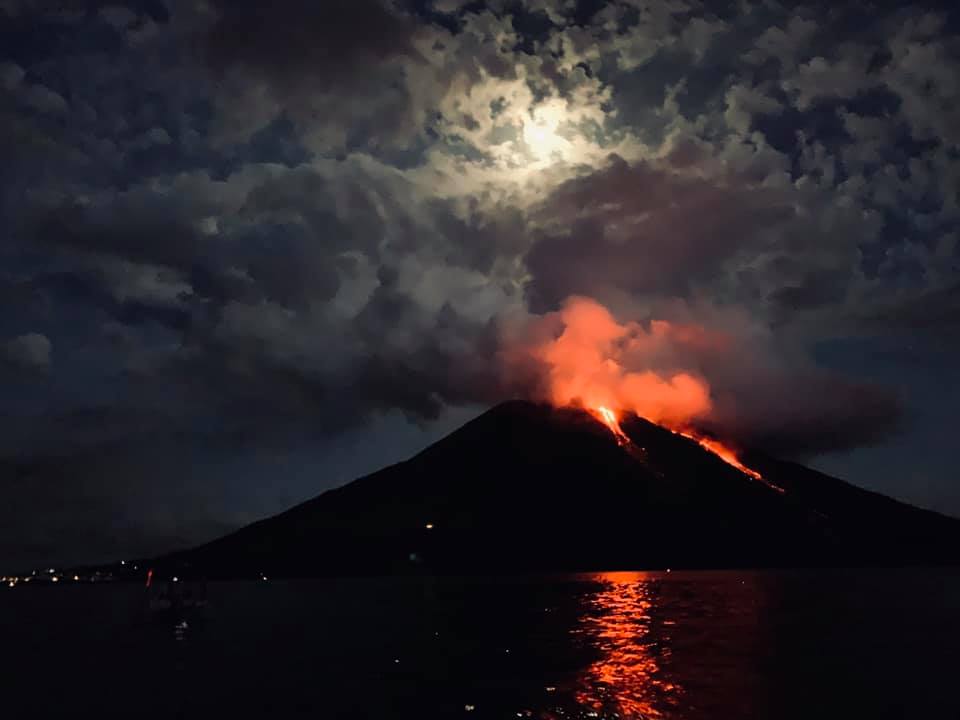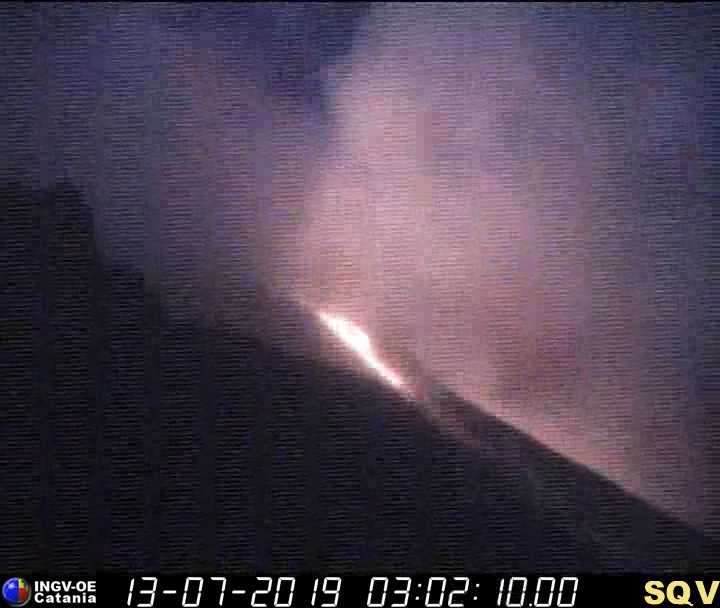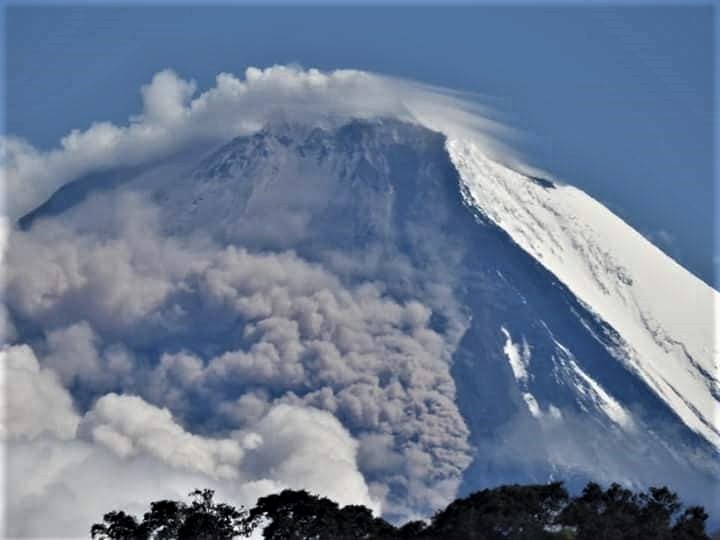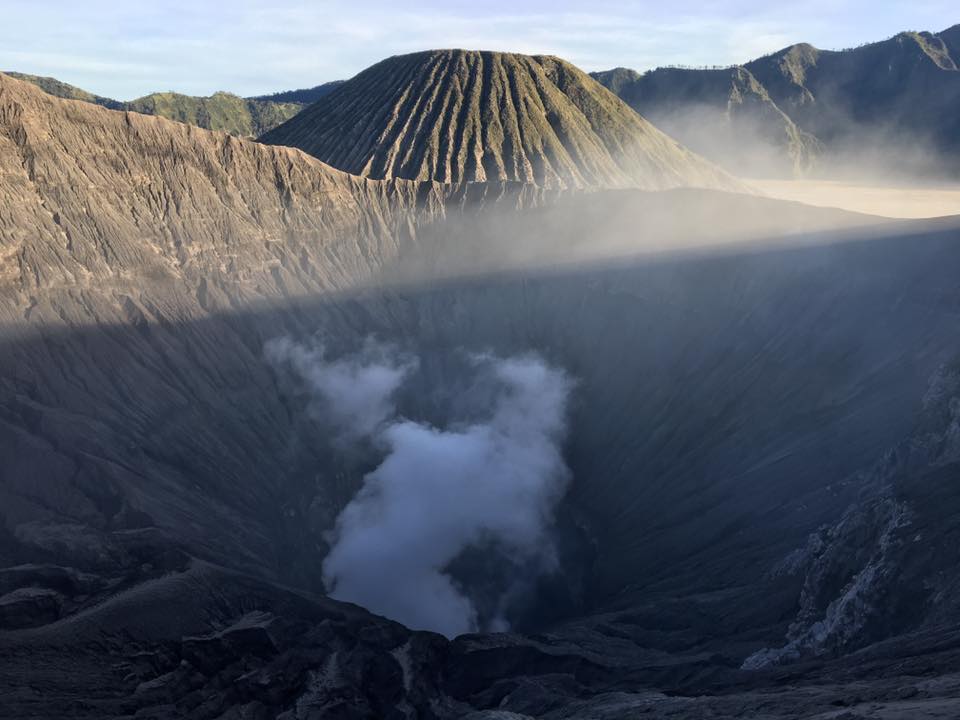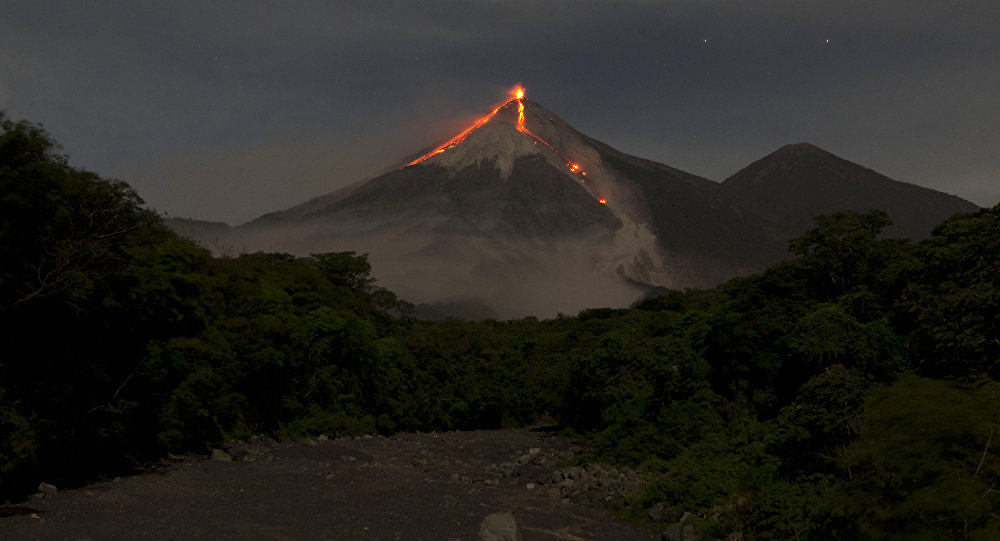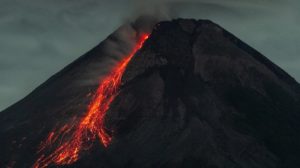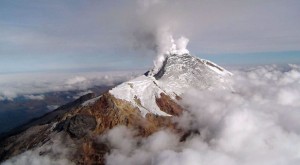July 14 , 2019.
Italy , Stromboli :
COMMUNIQUE ON THE VOLCANIC ACTIVITY OF STROMBOLI, 13 July 2019, 01:12:51 UTC.
The Osservatorio Etneo of the INGV indicates that the observations made by the surveillance cameras at 400 m above sea level and by the staff of the INGV on the ground on the island show that all the night, explosions and lava flows continued from the crater terrace. In particular, the explosive activity was rather intense in the area of the North crater, where at least five vents were active. Two lava flows emitted by the same vents remained confined to the upper part of the Sciara del Fuoco and appear stagnant this Morning.
The lava flows emitted by the Center-South zone of the crater terrace covered the upper to middle slope of the Sciara. During the night, all active lava fronts discharged incandescent materials that descended the steep slope of the Sciara del Fuoco and reached the shoreline.
Mean amplitude of volcanic tremors has not shown significant variations over the past 24 hours.
The above image was recorded by the visual surveillance camera at 400 m altitude on the northern edge of the Sciara del Fuoco and shows the lava overflows of the North crater area on the evening of July 12 (with the almost full moon above).
Source : INGV Vulcani.
Photo : Christoph Chaloupka.
Ecuador , Sangay :
Information, FRIDAY, JULY 12, 2019.
The Sangay volcano maintains eruptive activity started on May 7 this year. This activity is characterized by the emission of lava flows and ash column emissions. It should be noted that all these phenomena are limited to the vicinity of the volcanic building.
It was reported that on July 11, two ash emissions from the Sangay volcano were reported, recorded by satellite and by the VAAC. The time of their reports is 10: 41TL and 12: 59TL, the heights of emission exceed the 2000 meters above the level of the crater and the direction of the plume is directed towards the West-South-West.
Based on these considerations, a slight presence of volcanic particles could be recorded in the environment, mainly in the province of Guayas.
The Institute of Geophysics of the National Polytechnic School is attentive to the activity on the volcano and informs about changes that may be recorded.
Source : IGEPN.
Photo : Juan Auquilla.
Indonesia , Bromo :
Level II Activity Level (WASPADA). The Bromo (2,329 m above sea level) has some eruptions.
Since yesterday and until this morning, the volcano was clearly visible and covered by fog. The smoke from the crater is weak to medium, white in color, and rises between 50 and 300 meters above the summit. The wind blows weakly in the South and North-West.
The seismographs, on July 12, 2019, recorded:
2 deep volcanic earthquakes
Tremor continuous amplitude 0.5 – 1 mm, dominant value 1 mm
Recommendation: Communities around G. Bromo and visitors / tourists should not move within 1 km of the crater.
VONA: The latest ORANGE color code was issued on April 6, 2019 at 07:18, for continuous puffs of smoke over the crater, about 3,829 m above sea level or about 900 m above the summit. The smoke column was moving to the southeast.
For a normal status of the volcano: people / tourists / climbers do not spend the night and do not camp in the crater to avoid the potential threat of toxic gases.
Source : PVMBG
Photo : Rainer Albiez / Facebook.
Guatemala , Fuego :
Type of activity: Vulcanian
Morphology: Composite Stratovolcano
Geographical location: 14 ° 28’54˝ Latitude N; 90 ° 52’54˝ Longitude O.
Height: 3,763msnm
Weather conditions: partly cloudy
Wind: North East 2 km / h
Precipitation: 54.8 mm
Activity:
Presence of low white outgassing at an approximate height of 4300 m altitude that is dispersed to the west and southwest. 13 to 19 low to moderate ash emissions are reported with ash columns at a height of approximately 4,500 to 4,700 m above sea level moving 10 to 15 km to the west and south . Low to moderate rumblings occur, low to moderate shock waves that cause vibrations in the roofs and windows of houses near the volcano, and weak sounds similar to those of a locomotive with delays of 3 to 7 hours. minutes. At night and early in the morning, incandescence was observed in the crater at an approximate height of 200 to 300 meters above the crater, causing weak to moderate avalanches on the crater contour, some reaching long distances to vegetation. towards the ravines: Seca, Taniluya, Ceniza, Trinidad, El Jute, Las Lajas and Honda. The ashes fall in Morelia, Santa Sofia, El Porvenir, Finca Palo Verde, San Pedro Yepocapa, Panimache I and II, among others.
Source : Insivumeh
Photo : Moises Castillo / Sputnik.

